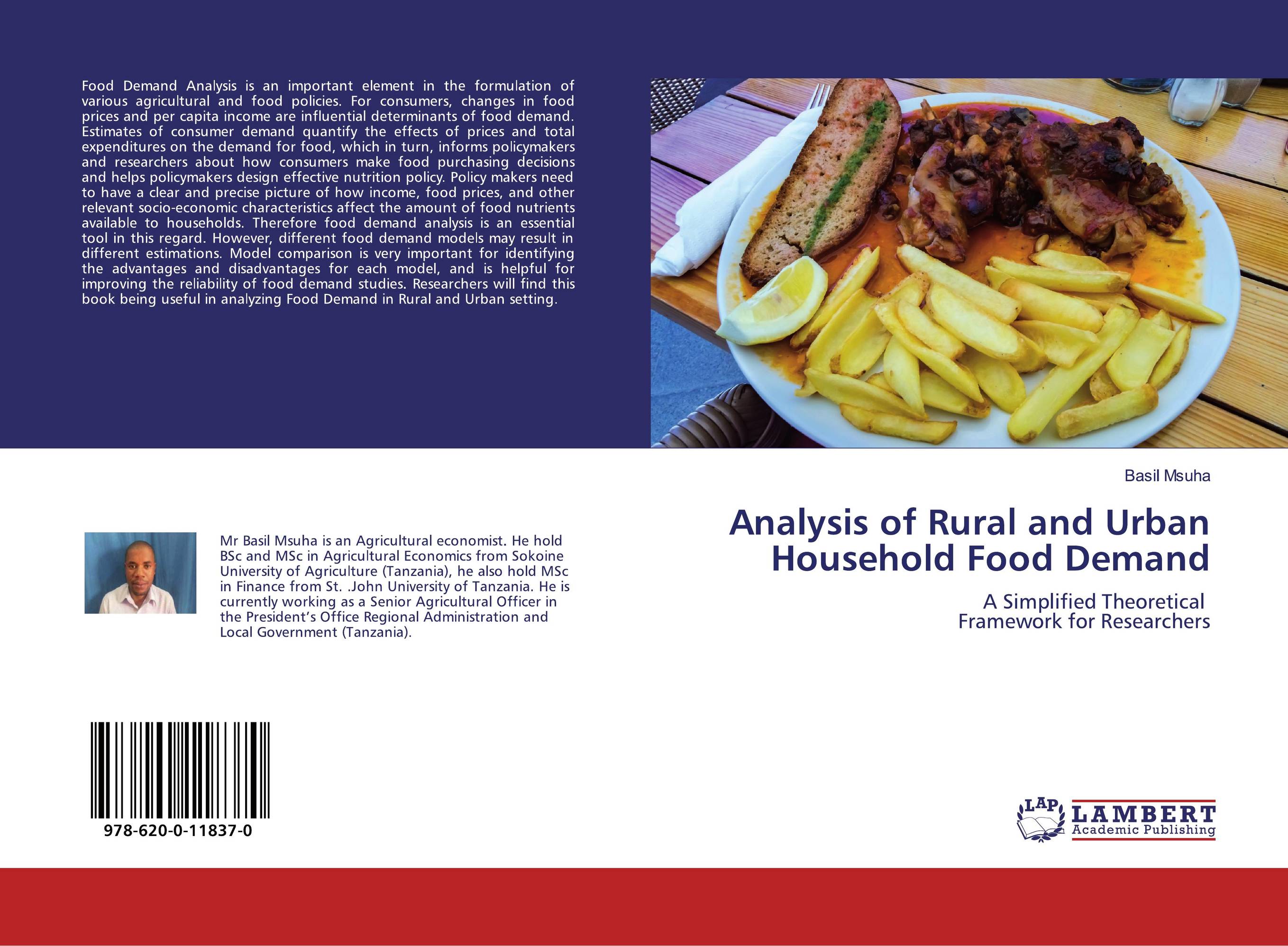| Поиск по каталогу |
|
(строгое соответствие)
|
- Профессиональная
- Научно-популярная
- Художественная
- Публицистика
- Детская
- Искусство
- Хобби, семья, дом
- Спорт
- Путеводители
- Блокноты, тетради, открытки
Analysis of Rural and Urban Household Food Demand. A Simplified Theoretical Framework for Researchers

В наличии
| Местонахождение: Алматы | Состояние экземпляра: новый |

Бумажная
версия
версия
Автор: Basil Msuha
ISBN: 9786200118370
Год издания: 2019
Формат книги: 60×90/16 (145×215 мм)
Количество страниц: 52
Издательство: LAP LAMBERT Academic Publishing
Цена: 22924 тг
Положить в корзину
| Способы доставки в город Алматы * комплектация (срок до отгрузки) не более 2 рабочих дней |
| Самовывоз из города Алматы (пункты самовывоза партнёра CDEK) |
| Курьерская доставка CDEK из города Москва |
| Доставка Почтой России из города Москва |
Аннотация: Food Demand Analysis is an important element in the formulation of various agricultural and food policies. For consumers, changes in food prices and per capita income are influential determinants of food demand. Estimates of consumer demand quantify the effects of prices and total expenditures on the demand for food, which in turn, informs policymakers and researchers about how consumers make food purchasing decisions and helps policymakers design effective nutrition policy. Policy makers need to have a clear and precise picture of how income, food prices, and other relevant socio-economic characteristics affect the amount of food nutrients available to households. Therefore food demand analysis is an essential tool in this regard. However, different food demand models may result in different estimations. Model comparison is very important for identifying the advantages and disadvantages for each model, and is helpful for improving the reliability of food demand studies. Researchers will find this book being useful in analyzing Food Demand in Rural and Urban setting.
Ключевые слова: Food demand analysis, food demand models, food demand theory, Consumption pattern, inferior food, normal food, Income Elasticity, Price Elasticity



